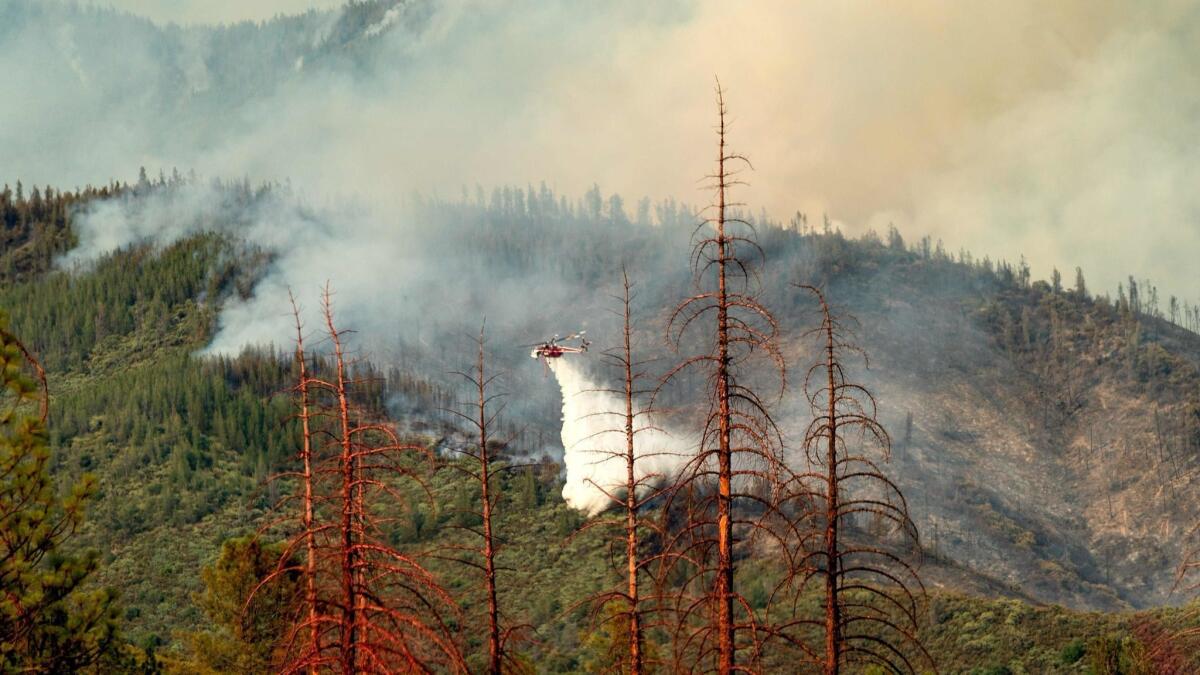Parts of Yosemite are closed as raging Ferguson fire moves closer

- Share via
Parts of Yosemite National Park have been closed as the raging Ferguson fire moves closer, authorities said Tuesday.
The fire, which has claimed the life of one firefighter and injured several others, has burned more than 36,000 acres southwest of Yosemite and is now 25% contained, officials said. The fire was sending huge amounts of smoke into the Yosemite Valley.
“Smoke may be heavy at times,” the park said in a statement, advising visitors to “limit activity during the periods of poor air quality. Some facilities and services are closed or diminished.”
A video camera inside the park Tuesday showed dark skies and black clouds pushing through trees and open spaces.
Officials announced the closure during a community meeting Tuesday.
Park officials said Highway 140, El Portal Road, Glacier Point Road and Arch Rock Entrance are all closed.
More than 3,000 fire personnel are battling the blaze, aided by dozens of water-dropping helicopters, water trucks and bulldozers.
Fire crews are encountering steep, rugged terrain that has made it a challenge to navigate. One particularly precarious area where the fire is burning was named the “Devil’s Gulch” many years ago by the area’s first explorers, fire information officer Rob Deyerberg said.
The terrain is “only a place where the devil would live,” Deyerberg said. “We will not put firefighters down in the worst places. That’s where they build their lines, develop their plans of where can we catch this fire on our terms.”
One firefighter operating a bulldozer died when his vehicle rolled down a hillside, and six others have been hurt — their injuries ranging from back strains to broken bones and heat exhaustion, said U.S. Forest Service spokesman Jim Mackensen.
The fire, which is moving east toward Yosemite, is fueled in part by large trees that have been killed by bark beetle infestation, Deyerberg said. Years of drought and recent drought-like conditions have allowed the invasive insect’s population to explode.
“Dead trees are drier, “ Deyerberg said. “Dry fuel burns hotter and faster.”
These frail trees send embers and burning pieces of material flying all over the forest, helping the fire to spread, he added.
But Deyerberg said that firefighters are making progress.
“They are feeling very confident and that has added to our containment percentage of now being 25%,” he said.
UPDATES:
2:05 p.m.: This article was updated with comments from Deyerberg
This article was originally published at 12:50 p.m.
More to Read
Sign up for Essential California
The most important California stories and recommendations in your inbox every morning.
You may occasionally receive promotional content from the Los Angeles Times.









